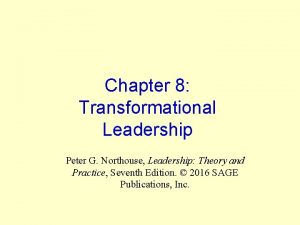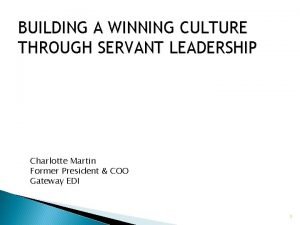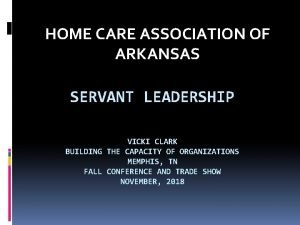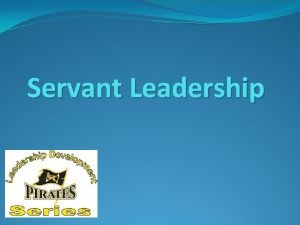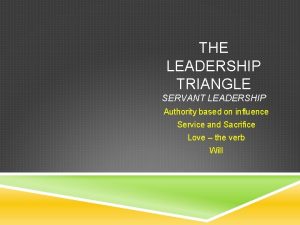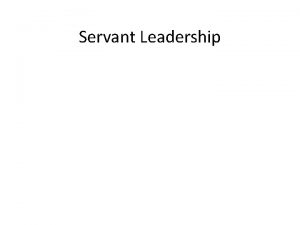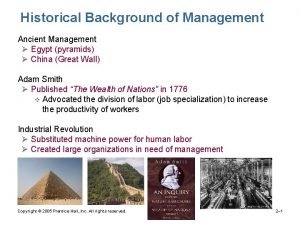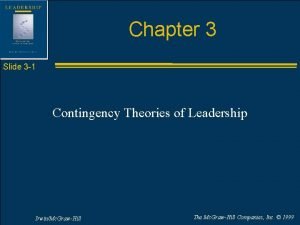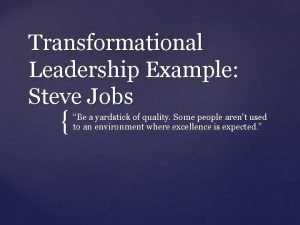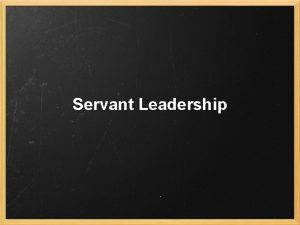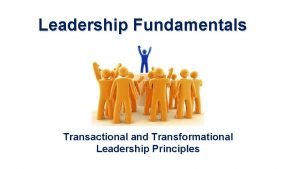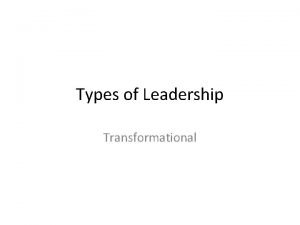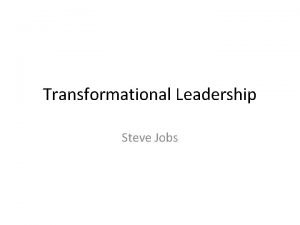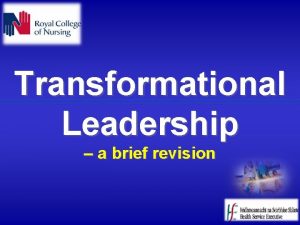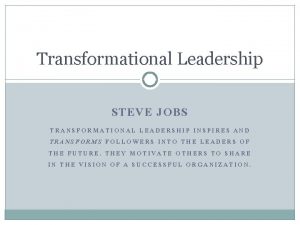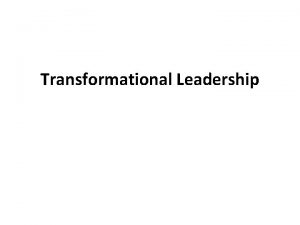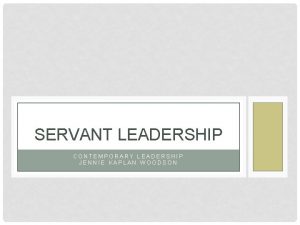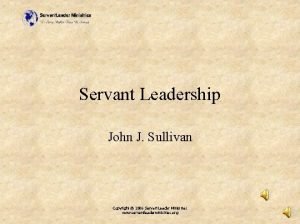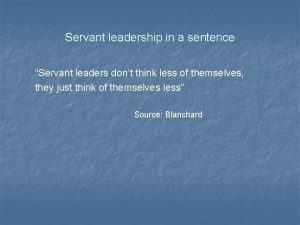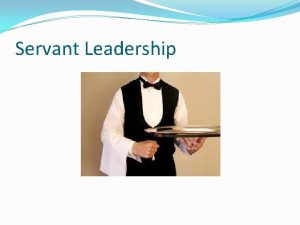Contemporary Leadership Styles grid contingency transactional transformational servant

























- Slides: 25

Contemporary Leadership Styles grid, contingency, transactional, transformational, servant theories

Managerial Grid Model Manager’s concern for employees and production GRID Plots the degree of task-centeredness versus personcenteredness Initially, 5 leadership styles associated with this type of leadership Now, 2 more including the element of resilience


1. The Indifferent or Impoverished Leader 2. The Country Club or Accommodating Grid 3. The Status Quo or Middleof-the-Road 4. The Dictatorial or Produce, Perish or Control (Similar to Autocratic Leader) 5. The Sound or Team TWO EDITIONS: 6. The Opportunistic Style or OPP 7. The Paternalistic Style or PAT

These leaders show little concern for employees or production The Indifferent or Impoverished Leader Preserving their employment Ineffective


The Country Club or Accommodating These leaders will go above and beyond for employees Self-motivated environment Lack of attention on reaching task goals


The Status Quo or Middleof-the-Road Balance Employees are indifferent Production level is adequate

Focus is mostly on production The Dictatorial or Produce, Perish or Control Not much concern for employees Rigid and strict High employee turnover

Considered most effective The Sound or Team environment High employee satisfaction Effective productivity


The Opportunistic Style or OPP (anywhere on grid) Seek opportunity Want to reach objectives Do anything to reach their goals

The Paternalistic Style or PAT (migrates from top to bottom of grid) Guide employees Set goals for themselves and employees Reward/Punishment

CONTINGENCY Theories of Leadership • Contingency Approach: looking at leadership success in varying situations • Continuum

Tannenbaum and Schmidt

Considers: Fielder’s Contingency Model Quality of leader-member relations (good or poor) Degree of task structure (high or low) Amount of power position (strong or weak)

LOOKS AT “READINESS” IN BEHAVIOUR Hersey. Blanchard Situational Leadership Theory (Contingency)

HOUSE’S PATH-GOAL THEORY Effective leaders set goal 4 leadership style: Directive Supportive Achievement-oriented Participative

OTHER CONTINGENCY THEORIES: Substitutes for leadership Vroom-Jago Leader-Participation Theory

Transactional “Often used to describe the approach of managers who apply the insights of the reader-behaviour and contingency theories, particularly the path-goal theory” (532) Ultimately, leader wants employees to work hard and perform well

Inspirational leadership Transformational Leadership Leaders achieve extraordinary performance Changing how things are usually done

Qualities of Transformational Leaders Vision Charisma Symbolism (celebrating excellence) Empowerment Intellectual stimulation Integrity

SHARES POWER Servant Theories PUTS NEEDS OF OTHERS FIRST; NOT THEIR FEELINGS FOCUS NOT ON LEADER

Qualities of a Servant Leader Listening. Empathy. Healing. Awareness. Persuasion. Conceptualization. Foresight. Stewardship. Commitment to the growth of people. Building community.
 Transformational leader and transactional leader
Transformational leader and transactional leader What is transformational leadership
What is transformational leadership Difference between public servant and civil servant
Difference between public servant and civil servant Contemporary leadership styles
Contemporary leadership styles Steve jobs a transformational leader
Steve jobs a transformational leader Jjdidtiebuckle
Jjdidtiebuckle Servant theories
Servant theories Northouse 2016 transformational leadership
Northouse 2016 transformational leadership Servant leadership vs followership venn diagram
Servant leadership vs followership venn diagram Servant leadership theory
Servant leadership theory Servant leadership
Servant leadership Servant leadership webinar
Servant leadership webinar Ethical servant spiritual and authentic leadership
Ethical servant spiritual and authentic leadership Pillars of servant leadership
Pillars of servant leadership 12 principles of servant leadership
12 principles of servant leadership What we will cover today
What we will cover today Followership and servant leadership
Followership and servant leadership Servant leadership triangle
Servant leadership triangle Servant leadership northouse
Servant leadership northouse Servant leader meaning
Servant leader meaning Early contingency theories of effective leadership
Early contingency theories of effective leadership Ancient management
Ancient management Contingency theory of leadership
Contingency theory of leadership What are the characteristics of contemporary dance?
What are the characteristics of contemporary dance? Steve jobs as transformational leader
Steve jobs as transformational leader Howard schultz transformational leadership
Howard schultz transformational leadership







